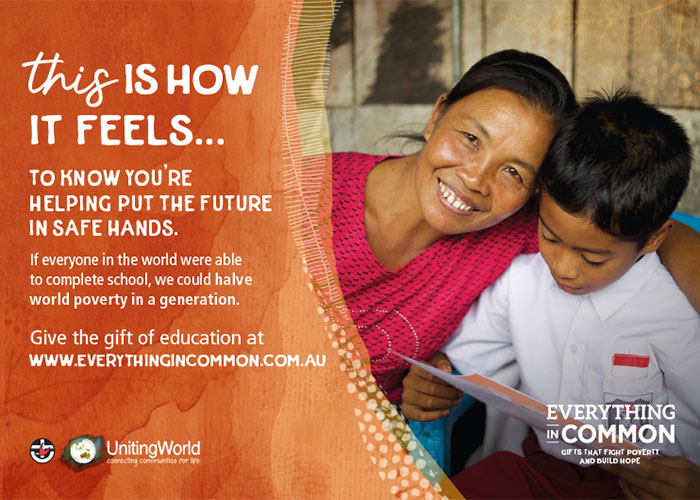As the world juddered to a halt due to Covid-19 Adam Sébire got stranded in a lighthouse keeper’s cottage on Utsira Island about 120 kilometres from Bergen in Norway. Here’s his story.
I was travelling for filming just over eight weeks ago when the borders suddenly snapped shut ahead of me in Greenland and behind me in Svalbard. I found myself marooned, midway, on a tiny windswept island in the Norwegian North Sea called Utsira.
In my PhD research I’m looking at visual representation of climate change. I left Sydney last year for some months in the Arctic – a region which is seen as the canary in the coal mine for climate change.
At the beginning of March, I finished my work in Svalbard, opened my exhibition about climate change at the world’s northernmost art museum, Galleri Svalbard, and was slowly heading towards Greenland to document the annual sea-ice breakup there in spring. I’d been there in 2018 and the work I made, which ends with me floating into oblivion atop a piece of sea ice, was just starting to get interest from all around the world – big name museums – when Covid-19 struck. It’s a bit frustrating just as my work was gaining momentum, but I know that many other arts workers are faring much worse. My sister, for example, is a professional symphony orchestra musician.
On route to Greenland via Norway and Denmark I wanted to give myself some days to recover in plus temperatures and a friend had suggested I take the ferry to Utsira island. It was arranged that I would stay in the lighthouse keeper’s cottage on the western side of the island. I arrived just as Norway imposed social distancing measures, so I went into two weeks self-isolation to make sure I didn’t bring the virus to the island. I’ve been here eight weeks now and Utsira, thankfully, remains coronavirus free.
Besides the lighthouse (dating from 1844) there are 50 sheep, which keep getting into the garden somehow, and a weather station. All look after themselves though — so I’m the only person living up here on Utsira’s peak. There are 215 people, largely fishermen and many retired, living on the other side of the island.
Utsira is a tiny rocky island of six square kilometres. The only way to get here is by boat. Just as the boat has two harbours to choose from when it’s really windy, the lighthouse has two doors for entry for the same reason. It’s incredibly windy here. The weather station here measured 133 kilometres per hour the other day. It’s pretty inhospitable but it’s been occupied since the Stone Age and the Internet is way faster than Australia’s domestic NBN – 100Mbps is the minimum standard, even up here in the lighthouse.
The Utsira community is very friendly and happy to say hello, but there’s an odd kind of shadow over my arrival now with social distancing, it’s like pushing “pause” on the process of getting to know them. Locals ask me if I’m okay and not too lonely up on the mountain. I tell them I’m loving it. They arranged for a bicycle and gumboots so I’m set!
With Australia closing its borders, I really felt like an exile. My parents live in Australia’s Snowy Mountains, in the middle of the bush, so they’re already socially distancing by dint of geography, although of course I worry about not being able to rush back to see them if they became ill (nigh impossible now).
While I’ve been overdosing on news media, it could just as well be a work of fiction to me. There’s no sense of any of what I read about, manifesting here in my daily life, other than a table with disinfectant at the local supermarket, and ever fewer transatlantic contrails overhead.
If the pandemic has spread in record time it’s because we place such emphasis on travelling at breakneck speed. New York today, Shanghai tomorrow, Sydney next week. We need to slow down. Especially me.
My own form of slowing down has occurred while I’m here, and I’m grateful for this chance to immerse myself in a place that felt quite alien to me. I’ve started to get a sense of the seasonal changes here, the people’s relationship to a harsh landscape, the migration of birds, while the lighthouse’s blinks have become kind of a metronomic constant for me. I can stare at it for hours and always see new qualities in this sparkling diamond encased in its glass vitrine.
I’m beginning meditation for which I sit in the lantern room or indeed occasionally inside the enormous first-order lighthouse lens itself. The light-sensor mechanism has occasionally activated when storm clouds unexpectedly darkened the sky, but otherwise it’s quite a nice spot for meditation, just listening to the howl of the wind against the tower exterior.
I really hope this collective global crisis can move us from being a society where wealth and profit are ends in themselves to one where the wellbeing of people and the environment is returned to centre-stage. Because it’s a once in a lifetime disruption, in hindsight we may see 2020 as the turning point where the world did or didn’t put itself on the path to avoid catastrophic climate change, which promises far worse outcomes in terms of lives and livelihoods lost. It may be that the best chance we have to change tack is now, as we emerge from our near standstill. It could prove to be a brilliant example of a crisis containing the seeds of opportunity.
_______________
Adam Sébire is an Australian PhD student and former resident of the Rocks area in Sydney.





